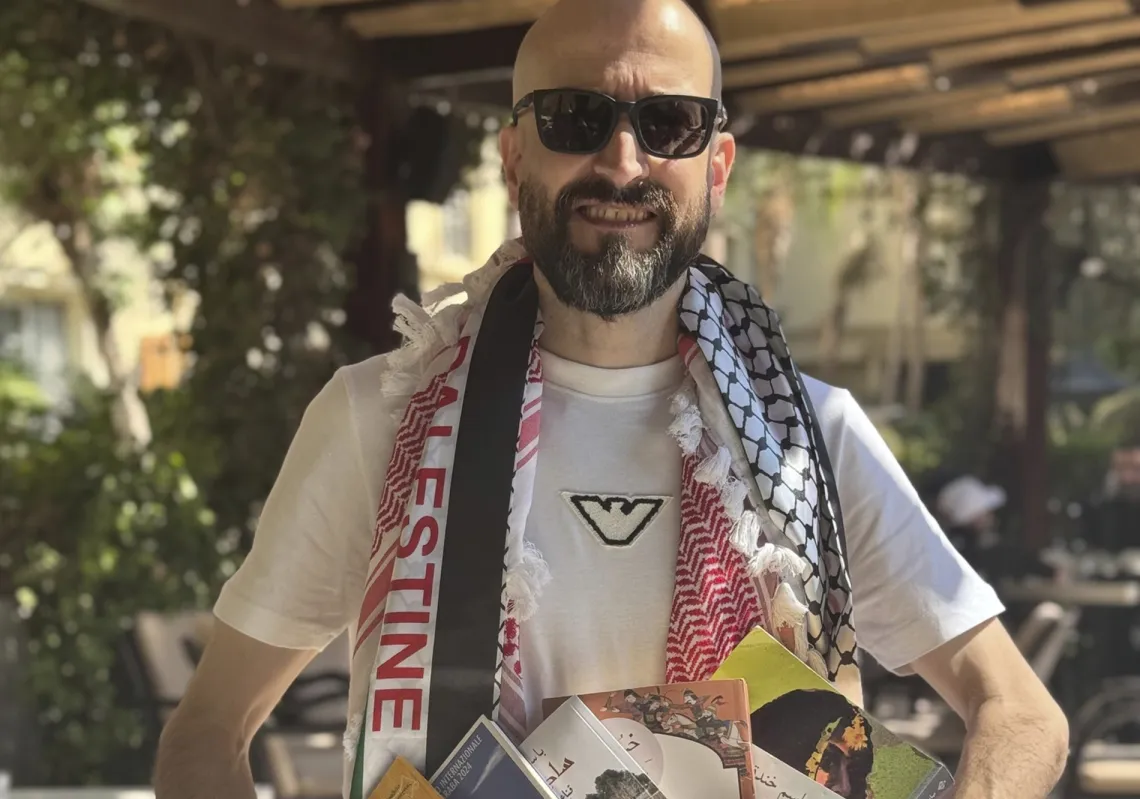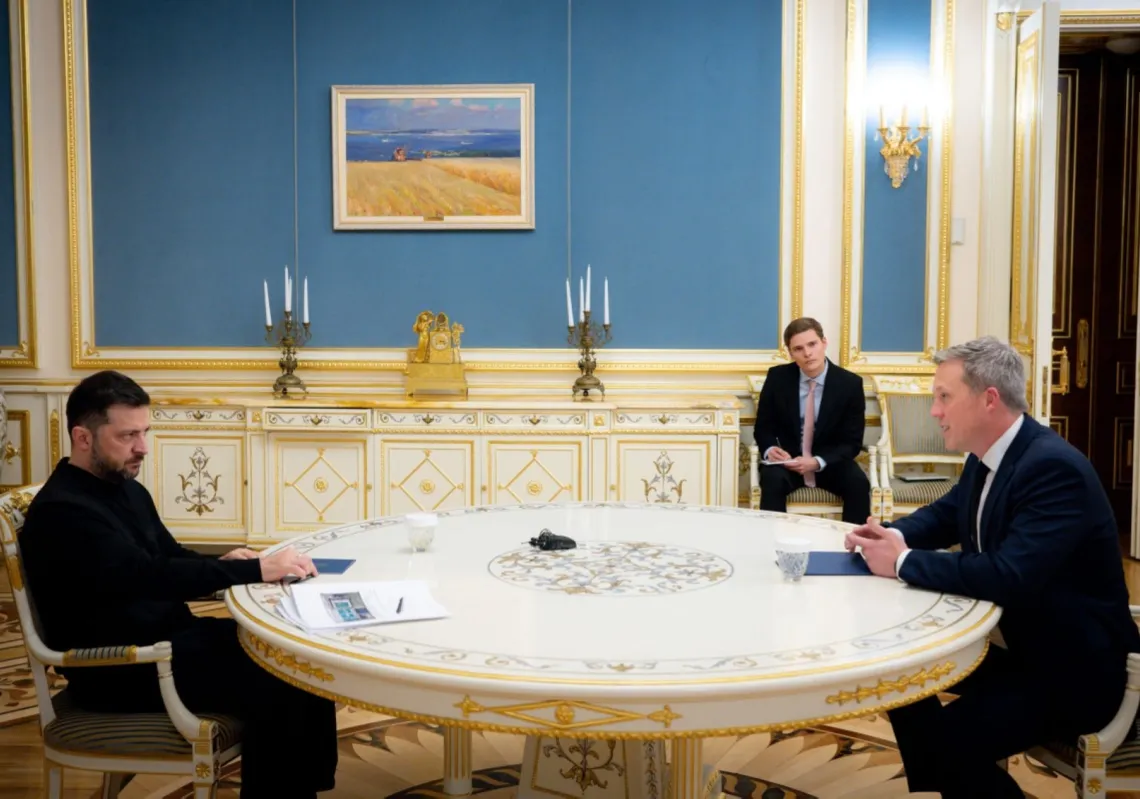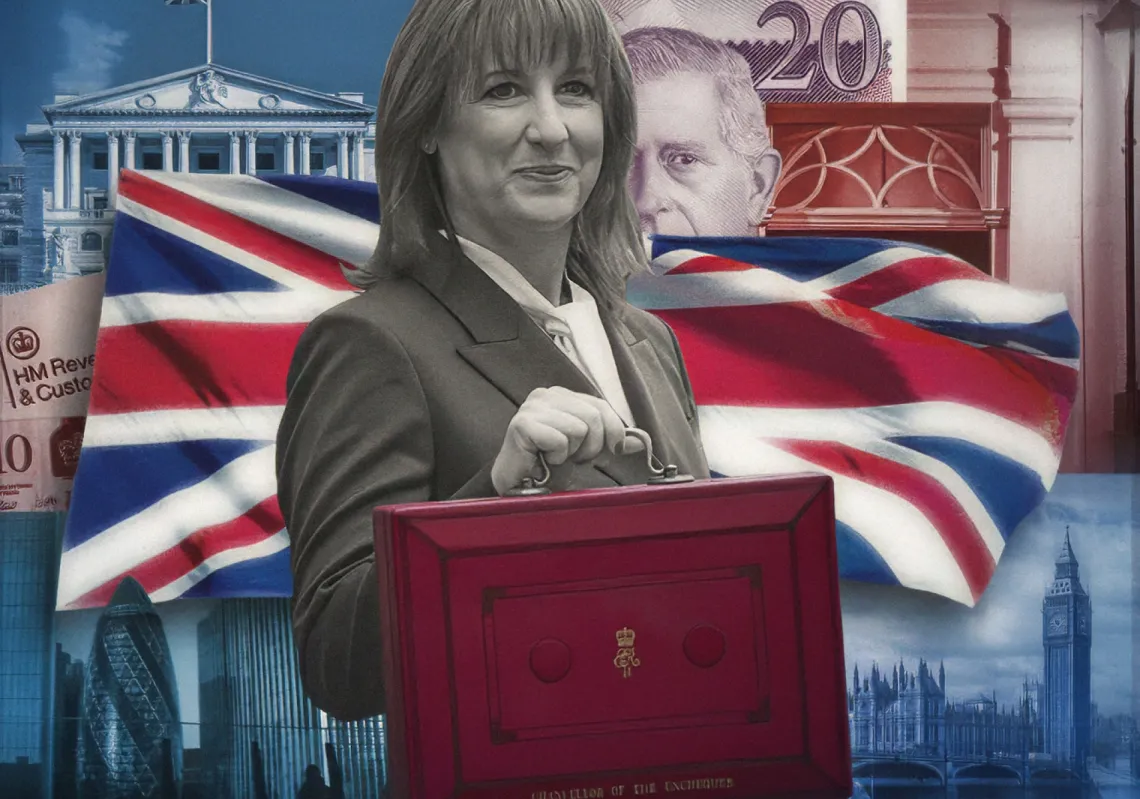On a summer day in 1971, writer Naguib Mahfouz was sitting with fellow novelist Gamal al-Ghitani at their customary spot at Orabi Cafe in Cairo when a man caught their attention. Mahfouz inquired about his identity. Sure enough, al-Ghitani recognised him as General Hamza El-Basyouni, the former director of Cairo’s military prison.
The moment would go on to resonate in some of his most famous writing, published in 1974, several years before he won his Nobel Prize for Literature in 1988 (the only Arab writer to have won the award). El-Basyouni, who had greying hair, bulging eyes, long, thin fingers, and an eccentric demeanour, also caught the eye of the staff, who promptly gave him and his companions a chessboard.
Al-Ghitani recalled the moment in Fusul magazine in 1997. “The master gazed intently, and it was in those moments that the novel Karnak Café was born.” Mahfouz met up with his friends at Orabi Cafe every Thursday, where he was jovial and relaxed. Al-Ghitani thinks several of those acquaintances transitioned into characters in his writing. Mahfouz admitted to Al-Arabi magazine in 1951 that this was a habit of his.
The book is largely based on the discussions of patrons at a café in Cairo. In particular, it follows three customers, the proprietor, and an infamous prison officer who joins the café’s regulars after retiring. Their stories cover much of the 1960s and begin in the aftermath of the 1967 war when Egypt was defeated by Israel. Patrons’ conversations are often political. Fifty years after its publication, Al Majalla looks at some of his character development and those he based them on.
Streets and strongmen
Mahfouz was known throughout literature for his depiction of life on Cairo’s streets during this period. It was a life he knew well, based on characters he knew well, including the futuwwat (strongmen).

The author was friends with the legendary futuwwa of Al-Husseinieh, Kamel Orabi. Orabi served prison time following an incident in the early 1930s when he blinded someone. Upon his release, Orabi opened a café in Cairo’s Abbassia neighbourhood. It also became a hub for political activity. Mahfouz and his intellectual friends frequented it, rubbing shoulders with influential politicians like Shawarbi Pasha and Ahmed Pasha, who sought Orabi’s favour.
Mahfouz drew inspiration from his experiences with the futuwwa youths, including a fierce battle in Beit El-Qadi Square, where armed gangs clashed and seized weapons from the Gamaliya police station, vividly depicted in his novels. A local who grew up with Mahfouz said Abbassaya residents took pride in the writer’s success because he was painting their part of Egypt in literature, which was then being consumed by readers around the world.
“We all feel like we won the Nobel Prize because he wrote about our lives, our struggles, the poverty we endured during the British occupation... He’s a true son of this land, and his writing honours us all.”
Real-life vs fiction
The people Mahfouz met informed his writing. This included old Egyptian families, which inspired several of his 55 characters in Mirrors, including Berlent, a pivotal figure later written into the film Amira, My Love in 1974. Berlent worked in the investigations department at the Ministry of Awqaf. Beautiful and liberated, she secretly married Madkour, a colleague. They spent their honeymoon in Alexandria, but upon returning, he divorced her.
Mahfouz and his friend Fahmy Abdel Salam blamed her for making an unwise decision, but she later discovered that she was pregnant. Fortunately, a contractor married her, accepting of her situation. As for Madkour, Mahfouz encountered him years later in Tahrir Square, where he appeared destitute.
His uncle, Abdel Khaleq Pasha, had been unable to cure him of his addiction, ultimately forcing him to divorce his daughter and taking his children away from him. Madkour was later dismissed from his job.
“He was once handsome and healthy,” Mahfouz recalled, “but when he met me, he asked for a few coins. He hadn’t tasted food for three days. I never saw him after that.”
The writer’s eye also saw how politicians often struggled between personal views and party interests, translating this to the page. Likewise, some of the university academics and public servants he knew appeared in his books. It was at the university that Mahfouz met Mahjoub Abdel Dayem, the protagonist in Cairo Modern. Mahfouz also knew Ahmed Akef, the protagonist of Khan Al Khalili, who expressed his gratitude for having the character named after him. During a brief stint in screenwriting, Mahfouz met various artists and directors who inspired characters in his novels Love in the Rain and Wedding Song.

Death threats and war
One of his friends, acting in jest, pointed out Hussein Badr al-Din, saying Mahfouz had featured him in one of his novels. True, he had drawn inspiration from him for a character in the book. “He pulled out a pistol, cursed at me, and I ran away from him,” Mahfouz recalled. “He could have killed me even though he hadn’t read the novel.”
He was a character who squandered wealth and fell into poverty, sleeping in a café and then facing jail due to drug addiction. His mother had a complex influence on his life. Mahfouz later said he was impotent yet engaged in multiple relationships. Eventually, he moved to Kuwait to find work.
The death of close friend Shoukry Atef to tuberculosis, along with his deep connection to the neighbourhood that the book took its name from, inspired Mahfouz to write Khan El Khalili in 1945, set against the backdrop of World War I.
During this period, the residents of the area, including Mahfouz himself, sought refuge in buildings belonging to Princess Shivakiar, consort of King Fuad I. Atef is depicted in the novel as Rushdi Akef, who suffers from tuberculosis and eventually succumbs to the illness, prompting his family to relocate to the Zaytoun area. Mahfouz vividly describes the modern buildings erected by Princess Shivakiar following the demolition of older buildings. In the novel, Rushdi’s brother, Ahmed Effendi Akef, was inspired by an employee at the university.
In a 1988 interview with the Al Akhbar newspaper, Mahfouz revealed that he took inspiration from “a low-ranking employee in the university administration who fancied himself an authority on all matters in Egypt. Despite possessing only a high school diploma, he arrogantly believed he had mastered every field of knowledge”. Mahfouz said the employee “exhibited shallowness and superficiality” but said he “took the risk of portraying him in the novel... if he discovered his likeness, he might have posed a threat to my safety or even attacked me due to his unpredictable nature”.
Write what you know
Following Khan El Khalili, Mahfouz wrote only a handful of novels entirely influenced by real-life events. One was The Beginning and the End in 1949, inspired by the plight of a family who had lost its breadwinner, plunging its members into financial turmoil.
However, the actual fate of the family was not as per the novel’s portrayal. In fact, the eldest brother died of cocaine addiction, while his sister Nafisa remained unmarried for years until she wed an elderly man requiring care (in the novel, she became a prostitute following a broken heart).
Most characters in the Cairo Trilogy (Palace Walk, Palace of Desire, Sugar Street) are based on real individuals, some drawn from Mahfouz’s family, others from neighbours. For Uncle Bashir, who hailed from a Syrian background, and from his sister’s husband’s character, Mahfouz drew inspiration for the character of Ahmed Abd El Jawad (Si El-Sayed), the protagonist.












